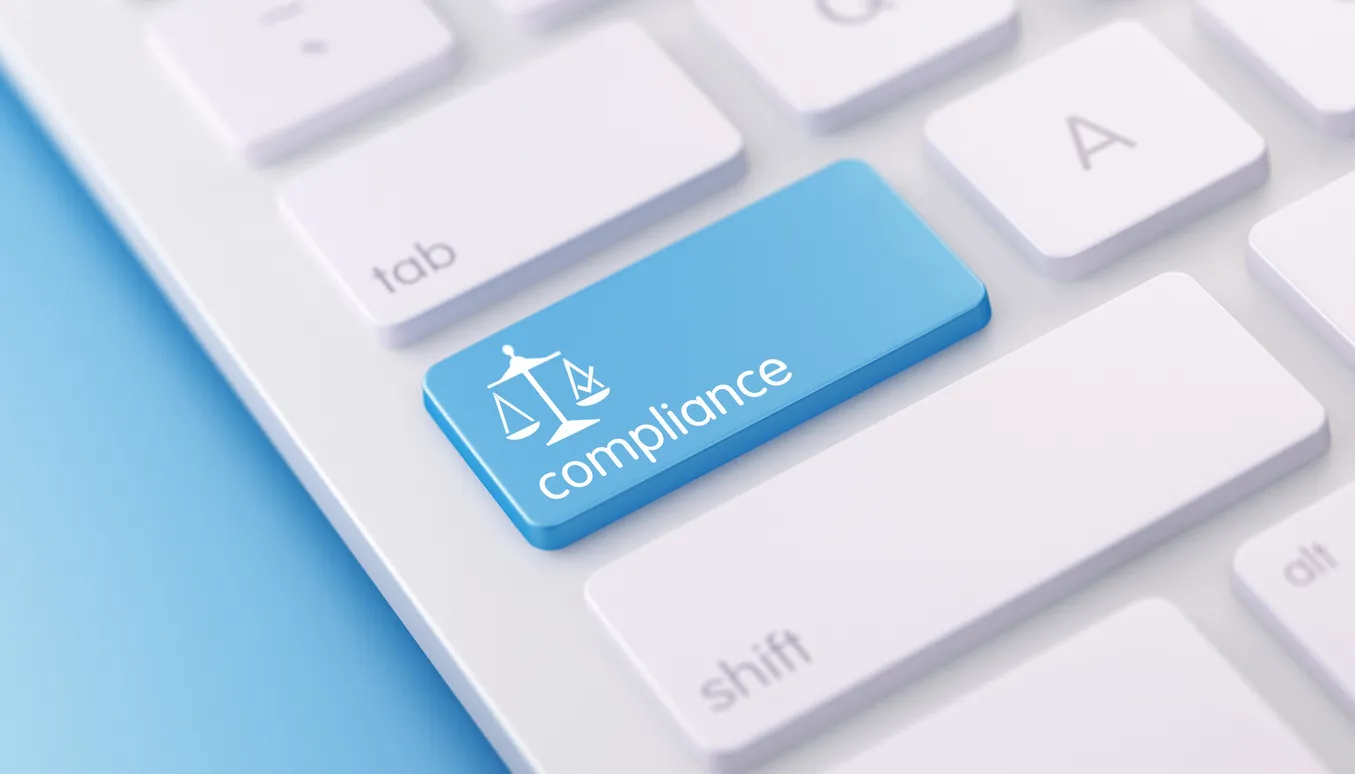Compliant IT asset disposal is about more than operational efficiency — it is a legal requirement. UK organisations are bound by a range of data protection, environmental and security regulations that govern how redundant IT assets must be handled, erased, and recycled.
Failure to comply can lead to fines, environmental prosecution, reputational damage, and significant operational risk. This guide outlines the key legal and regulatory frameworks that apply to IT asset disposal in the UK, and how organisations can demonstrate compliance.
Data Protection and Information Security Legislation
UK GDPR & Data Protection Act 2018
The UK GDPR and Data Protection Act 2018 govern the processing and disposal of personal data. Organisations must ensure that personal data held on redundant devices is securely erased or destroyed, and that disposal is carried out in accordance with Article 5 (data minimisation), Article 32 (security of processing) and Article 28 (processor obligations).
Controllers are responsible for ensuring that any IT asset disposal provider acts as a compliant data processor. Robust evidence of data sanitisation — such as erasure or destruction certificates and ROPA logs — must be maintained.
NIS Regulations 2018
For Operators of Essential Services and Digital Service Providers, the Network and Information Systems (NIS) Regulations require appropriate technical and organisational measures to manage security risks, including during decommissioning and disposal.
Freedom of Information Act (FOIA)
While not directly governing ITAD, FOIA considerations are relevant to public bodies. Poor disposal practices can result in unintended disclosures if data is not securely destroyed prior to device disposal.
Environmental Regulations
WEEE Regulations 2013
The Waste Electrical and Electronic Equipment Regulations are the primary environmental legislation for disposing of IT and electrical assets. Businesses must ensure their e-waste is processed via authorised treatment facilities, with appropriate record keeping and reporting.
Under WEEE, producers and users are required to take responsibility for the collection, treatment, and recycling of equipment, ensuring compliance with environmental standards.
Duty of Care & Environmental Protection Act 1990
Businesses have a legal duty of care to ensure waste is only transferred to registered carriers and treated appropriately. Waste transfer notes must be retained for a minimum of three years. Failure to comply can result in enforcement action and prosecution.
Hazardous Waste Regulations
Certain IT equipment (e.g. CRT monitors, UPS batteries) can be classed as hazardous waste and must be handled under specific controls, including the use of consignment notes and approved treatment routes.
Information Security and Industry Standards
NIST 800-88
The NIST 800-88 Guidelines for Media Sanitization are widely recognised as the gold standard for secure data erasure and destruction. Although not UK legislation, NIST is referenced by the ICO and used extensively in public sector procurement.
IT asset disposal providers should align their processes with NIST 800-88 to ensure secure, auditable erasure or destruction.
ISO 27001 & Cyber Essentials Plus
ISO 27001 provides an internationally recognised framework for managing information security, including end-of-life asset handling. Certification demonstrates structured, independently audited security controls.
Cyber Essentials Plus complements this by ensuring baseline cyber hygiene through independent testing and is increasingly required in public sector supply chains.
Emerging and International Standards
Alongside NIST 800-88, other international standards such as IEEE 2883-2022 are beginning to shape best practice for modern storage media sanitisation, particularly solid-state drives. While not legally mandated in the UK, awareness and alignment with evolving standards reinforces a robust and forward-looking approach to data security.
ADISA Standard 8.0
ADISA is a UK-based industry certification focused on IT asset disposal security. While some organisations pursue ADISA membership, it is not a legal requirement under GDPR, WEEE, or any UK regulatory framework.
Astralis has made a strategic decision not to pursue ADISA membership, instead focusing on ISO 27001, NIST 800-88 alignment, and Cyber Essentials Plus certification. These frameworks provide robust, independently audited assurance for secure data handling and media sanitisation, fully meeting UK legal and procurement requirements.
Procurement and Public Sector Framework Requirements
In addition to legislation, public sector frameworks such as Crown Commercial Service’s Technology Services and Cyber Security DPS impose contractual requirements for data protection, security standards, and environmental compliance.
Local authorities may also introduce additional obligations around environmental reporting, social value, and zero-to-landfill policies. Records retention and destruction schedules must be aligned with ITAD processes to ensure consistency and audit readiness.
Downstream Compliance and Export Controls
Compliance doesn’t end once assets leave site. The Basel Convention and Transfrontier Shipment of Waste Regulations govern the export of e-waste. Exporting untreated WEEE to developing countries under the guise of “reuse” is illegal.
Organisations must ensure their downstream supply chain complies with these regulations, working only with licensed carriers and treatment facilities.
Why Compliance Matters
Non-compliance carries significant risks:
- Data breaches due to improper disposal can result in ICO fines and reputational damage.
- Environmental non-compliance can lead to prosecution under WEEE or the Environmental Protection Act.
- Poor downstream controls can result in legal liability for illegal e-waste exports.
A structured, legally compliant IT asset disposal process protects data, the environment, and organisational reputation.
Conclusion
The UK legal and regulatory landscape for IT asset disposal is complex, spanning data protection, environmental law, security standards, and procurement requirements.
Astralis ensures full compliance by aligning its operations with UK GDPR, WEEE Regulations, NIST 800-88, ISO 27001, Cyber Essentials Plus, and rigorous downstream auditing — without reliance on commercial certifications that are not legally required.
By embedding compliance into every stage of the ITAD process, Astralis provides organisations with complete assurance that their assets are managed responsibly, securely, and in accordance with UK law.
Don’t leave compliance to chance. Astralis delivers fully accredited, GDPR-aligned, environmentally responsible IT asset disposal — giving you total assurance that every asset is managed in line with UK law. Speak to our team today to ensure your organisation stays fully compliant.
Frequently Asked Questions
What are the consequences of non-compliance with IT asset disposal regulations?
Non-compliance with IT asset disposal regulations can lead to severe consequences, including hefty fines from regulatory bodies like the Information Commissioner’s Office (ICO) for data breaches. Additionally, organisations may face reputational damage, which can affect customer trust and business relationships. Environmental non-compliance can result in prosecution under the Waste Electrical and Electronic Equipment (WEEE) Regulations or the Environmental Protection Act, leading to further financial and operational repercussions.
How can organisations ensure secure data erasure before disposal?
To ensure secure data erasure, organisations should implement robust data sanitisation processes that comply with recognised standards such as NIST 800-88. This includes using certified IT asset disposal providers who can provide evidence of data destruction, such as erasure certificates. Regular audits and maintaining records of data sanitisation activities are also essential to demonstrate compliance with data protection regulations and to safeguard against potential data breaches.
What role do environmental regulations play in IT asset disposal?
Environmental regulations, such as the WEEE Regulations, play a crucial role in IT asset disposal by ensuring that electronic waste is handled responsibly. These regulations require businesses to process e-waste through authorised treatment facilities and maintain proper documentation. Compliance with these regulations not only helps protect the environment but also mitigates legal risks associated with improper disposal practices, ensuring that organisations fulfil their duty of care regarding waste management.
Are there specific standards for handling hazardous IT waste?
Yes, there are specific regulations for handling hazardous IT waste, such as the Hazardous Waste Regulations. Certain electronic equipment, like CRT monitors and batteries, is classified as hazardous and must be managed under strict controls. This includes using consignment notes for tracking and ensuring that disposal is conducted through approved treatment routes. Compliance with these regulations is essential to prevent environmental harm and legal liabilities associated with hazardous waste management.
How does the Basel Convention affect IT asset disposal practices?
The Basel Convention impacts IT asset disposal by regulating the transboundary movement of hazardous waste, including electronic waste. It prohibits the export of untreated waste to developing countries, which is often done under the guise of “reuse.” Organisations must ensure that their disposal practices comply with this convention by working only with licensed carriers and treatment facilities, thereby preventing illegal e-waste exports and ensuring responsible waste management.
What should organisations consider when selecting an IT asset disposal provider?
When selecting an IT asset disposal provider, organisations should consider several factors, including compliance with relevant regulations such as UK GDPR and WEEE. It’s essential to verify that the provider follows recognised standards for data sanitisation, such as NIST 800-88, and can provide documentation of their processes. Additionally, organisations should assess the provider’s environmental practices, certifications, and experience in handling specific types of IT assets to ensure responsible and secure disposal.
How can organisations maintain compliance during the disposal process?
To maintain compliance during the disposal process, organisations should establish a structured IT asset disposal policy that aligns with legal and regulatory requirements. This includes conducting regular audits, maintaining accurate records of asset disposal, and ensuring that all personnel are trained in compliance practices. Collaborating with certified disposal providers and implementing a clear chain of custody for assets can further enhance compliance and mitigate risks associated with improper disposal.
About the Author
Laura Cooper is a leading expert in IT asset disposal compliance and data security. With over 15 years experience advising UK organisations on regulatory frameworks including UK GDPR, WEEE Regulations, and information security standards, Laura is passionate about helping businesses navigate the complexities of secure and environmentally responsible ITAD.





